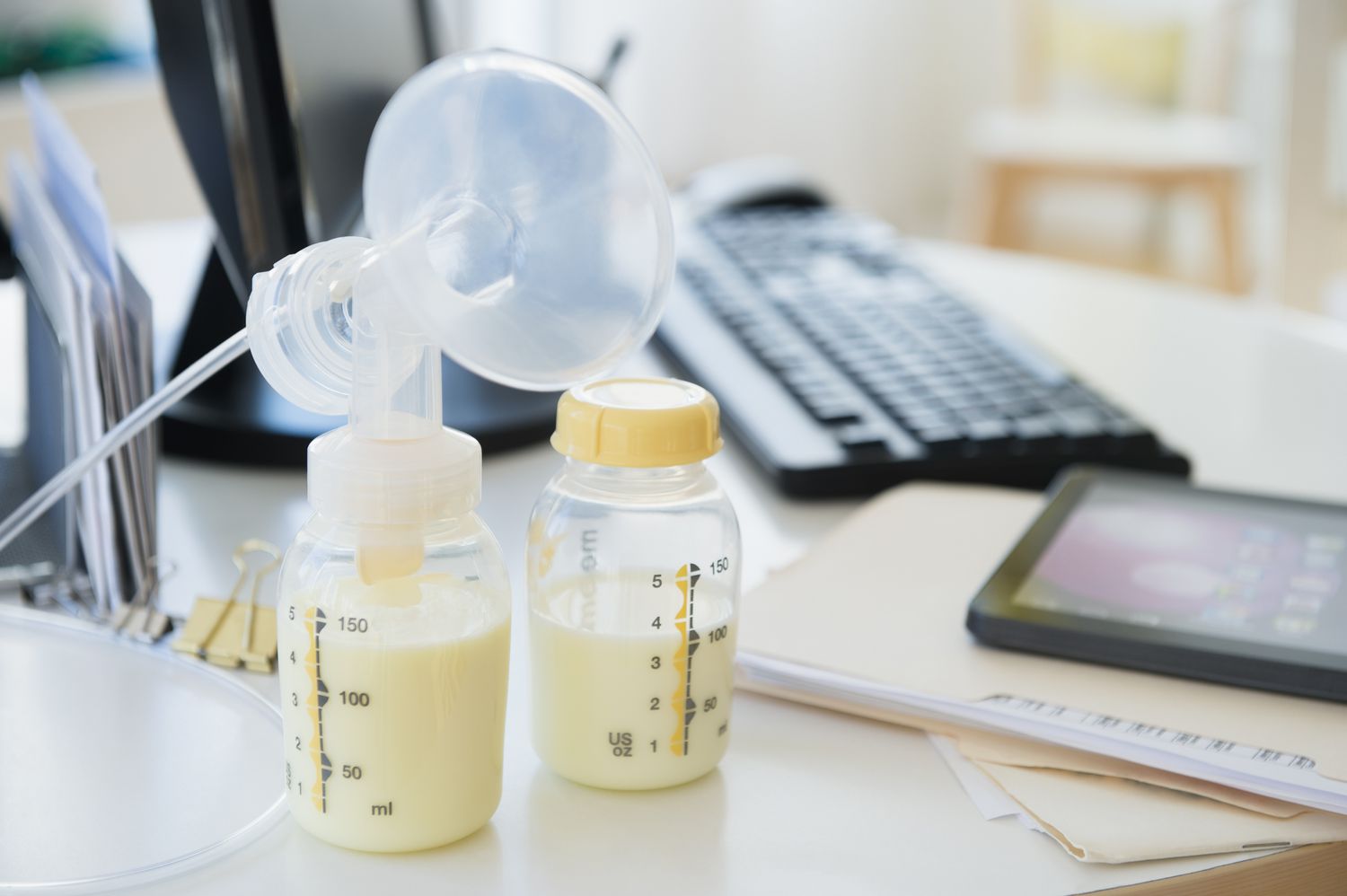

Articles
How To Store Breast Milk At Work
Modified: February 23, 2024
Learn how to store breast milk at work with our informative articles. Find helpful tips and advice for safely preserving your breast milk throughout the day.
(Many of the links in this article redirect to a specific reviewed product. Your purchase of these products through affiliate links helps to generate commission for Storables.com, at no extra cost. Learn more)
Introduction
Returning to work after having a baby can be both exciting and challenging for new mothers. One of the biggest concerns for breastfeeding moms is how to store their breast milk while they are away from their infants. Properly storing breast milk at work is essential to ensure that your baby receives the necessary nutrients and benefits of breastfeeding even when you are not physically present.
Breast milk is a valuable and precious resource that provides numerous benefits to infants. It is packed with essential nutrients, antibodies, and enzymes that help protect babies against infections and diseases. In addition to its nutritional value, breast milk also helps promote bonding between mother and baby. Therefore, it is crucial to know how to store breast milk correctly to maintain its quality and ensure that your little one receives all the benefits it provides.
In this article, we will provide a comprehensive guide on how to store breast milk at work. We will cover everything from choosing the right storage containers to proper storage techniques and maintaining the quality of the expressed milk. By following these guidelines, you can store your breast milk at work with confidence, knowing that you are providing the best for your baby even when you are apart.
Key Takeaways:
- Storing breast milk at work allows working mothers to continue providing valuable nutrition and immunity benefits of breastfeeding, supporting the bond between mother and baby even during working hours.
- Proper planning, organization, and adherence to guidelines are essential for successfully storing breast milk at work while maintaining its quality and safety.
Read more: How To Store Breast Milk In Freezer
Why is it important to store breast milk at work?
Returning to work does not mean you have to stop breastfeeding your baby. By expressing and storing breast milk, you can continue providing your little one with all the benefits of breastfeeding, even when you’re not physically present. Here are some reasons why it’s important to store breast milk at work:
- Provides optimal nutrition: Breast milk is tailor-made for your baby and contains essential nutrients and antibodies that are crucial for their growth and development. Storing breast milk allows your baby to continue receiving this optimal nutrition, even when you’re at work.
- Boosts baby’s immunity: Breast milk is packed with antibodies that help protect your baby against infections and diseases. By storing breast milk, you can ensure that your baby continues to benefit from this immune-boosting protection, even when you’re not available to breastfeed.
- Supports bonding and emotional connection: Breastfeeding is not just about nourishment; it’s also a special bonding experience between mother and baby. Storing breast milk allows your baby to continue benefiting from this emotional connection, even when you’re separated during working hours.
- Convenience and flexibility: Storing breast milk at work provides flexibility and convenience for both working mothers and their babies. It allows you to plan your work schedule without having to worry about interrupting breastfeeding or finding alternative feeding methods.
- Reduces the risk of contamination: By storing breast milk properly, you can minimize the risk of contamination and ensure that your baby receives safe and healthy milk. Storing breast milk in clean and appropriate containers helps maintain its quality and prevents the growth of harmful bacteria.
In summary, storing breast milk at work is important because it ensures that your baby receives optimal nutrition, boosts their immunity, maintains the emotional connection between mother and baby, provides convenience and flexibility, and reduces the risk of contamination. By understanding the significance of storing breast milk, you can make informed decisions and ensure that your baby receives the benefits of breastfeeding, even when you’re away at work.
Step-by-step guide for storing breast milk at work
Storing breast milk at work requires proper planning and organization. Here is a step-by-step guide to help you navigate the process with ease:
- Invest in a quality breast pump: Choose a reliable and efficient breast pump that suits your needs. Electric or manual pumps are both options to consider. Make sure to select one that is comfortable to use and helps you extract an adequate amount of milk.
- Create a pumping schedule: Determine the best times during your workday to pump breast milk. Aim for regular intervals to maintain milk supply and ensure that you have enough milk for your baby’s needs.
- Choose the right storage containers: Opt for high-quality containers specifically designed for storing breast milk. Consider using BPA-free plastic bottles or breast milk storage bags. Make sure the containers have airtight seals to prevent leakage and maintain the freshness of the milk.
- Wash your hands thoroughly: Before expressing breast milk, wash your hands with soap and water to maintain hygiene and prevent contamination.
- Express breast milk: Use your chosen breast pump to express milk during your designated pumping breaks. Follow the instructions provided with your pump to ensure proper usage.
- Transfer the milk into storage containers: After expressing, pour the breast milk into the chosen storage containers. Leave some space at the top of the container as the milk expands when frozen.
- Label and date the containers: Use a permanent marker to label each container with the date of expression. This helps you keep track of the freshness and ensures that you use the oldest milk first.
- Store the containers properly: Place the filled containers in a cooler bag with ice packs or in a refrigerator with a dedicated space for breast milk storage. Make sure the temperature remains between 32°F (0°C) and 39°F (4°C) to maintain the quality of the milk.
- Transport the milk home safely: When your workday ends, carefully transport the stored breast milk home in an insulated cooler bag with ice packs to keep it at the recommended temperature until you can refrigerate or freeze it.
- Clean and sanitize your pump: After each use, clean and sanitize your breast pump parts thoroughly following the manufacturer’s instructions. This helps maintain hygiene and prevents the growth of bacteria.
By following this step-by-step guide, you can effectively store your breast milk at work, ensuring that your baby receives the full benefits of breastfeeding, even when you’re not physically present.
Choosing the right storage containers
Selecting the right storage containers for your breast milk is essential to maintain its quality and ensure the safety of your baby. Here are some factors to consider when choosing storage containers:
- BPA-free materials: Look for storage containers that are made from BPA-free materials. Bisphenol A (BPA) is a chemical commonly found in plastics and can potentially leach into breast milk, posing health risks for infants.
- Airtight seals: Opt for containers with secure and airtight seals to prevent leakage and maintain the freshness of the milk. This helps to avoid wastage and ensures that the stored milk remains safe for consumption.
- Easy-to-read measurements: Choose containers with clear and easy-to-read measurement markers. This makes it convenient for you to measure the amount of milk you have expressed and helps you know the quantity to offer your baby.
- Freezer-safe: If you plan to freeze breast milk, ensure that the containers are suitable for freezer storage. Look for containers that are specifically labeled as freezer-safe and can withstand low temperatures without cracking or breaking.
- Easy to clean: Consider the ease of cleaning when selecting storage containers. Look for containers that are dishwasher-safe or have wide openings for easy hand-washing. Proper cleaning and sanitation are crucial to maintain the safety and quality of stored breast milk.
- Space-saving design: If you need to store a large quantity of breast milk, opt for storage containers that have a space-saving design. Stackable containers or those with a compact shape can help save space in your refrigerator or freezer.
Common types of storage containers for breast milk include BPA-free plastic bottles, breast milk storage bags, and glass containers. Each has its own advantages, so choose the option that suits your preferences and needs. Remember to always check the product labels and follow the manufacturer’s instructions for proper usage and care.
By selecting the right storage containers, you can ensure the safe storage of your breast milk, maintain its quality, and provide your baby with the best possible nutrition, even when you are away from them at work.
Preparing the breast milk for storage
Properly preparing your breast milk for storage is crucial to maintain its quality and ensure the safety of your baby. Here are some important steps to follow when preparing breast milk for storage:
- Wash your hands: Before handling breast milk, wash your hands thoroughly with soap and warm water. This helps to prevent the transfer of any harmful bacteria or germs to the milk.
- Use clean and sterilized containers: Ensure that the storage containers you are using are clean and sterilized. Wash them with warm soapy water or run them through the dishwasher on a sterilizing cycle. Rinse well and air dry before use.
- Express breast milk directly into the storage container: If possible, try expressing breast milk directly into the storage container to minimize handling and reduce the risk of contamination. This can be done by attaching the breast pump to the storage container or using storage bags specifically designed for direct pumping.
- If using a separate container: If you need to transfer the milk from the breast pump to a separate storage container, ensure that the container is clean and sterilized. Pour the expressed milk into the container carefully, avoiding any spills or contact with unclean surfaces.
- Allow the milk to cool: If the expressed milk is warm, allow it to cool before storing. Place the container in the refrigerator for a few minutes or run it under cool water to lower the temperature. However, avoid leaving the milk at room temperature for too long, as this can promote bacterial growth.
- Do not mix milk from different pumping sessions: It is recommended to not mix milk collected from different pumping sessions, as the composition and temperature of the milk may vary. Instead, store each batch of milk separately and combine them only when you are ready to feed your baby.
Remember, the key to preparing breast milk for storage is maintaining cleanliness, preventing contamination, and protecting its nutritional value. By following these steps, you can ensure that the breast milk you store at work remains safe and provides your baby with the best possible nourishment.
Read more: How To Store And Freeze Breast Milk
Proper storage techniques
Proper storage techniques are essential to maintain the quality and safety of breast milk. Follow these guidelines to ensure that the stored breast milk remains fresh and nutritious for your baby:
- Refrigerator storage: Freshly expressed breast milk can be stored in the refrigerator for up to 4 days. Place the containers in the back of the refrigerator where the temperature is the most consistent. Avoid storing breast milk in the refrigerator door as it may be exposed to temperature fluctuations.
- Freezer storage: If you need to store breast milk for a longer duration, freezing is an option. Breast milk can be safely stored in the freezer for up to 6 months. However, it is recommended to use frozen breast milk within 3-4 months for optimal quality. Place the containers in the back of the freezer, away from the door, to ensure a more stable temperature.
- Do not refreeze thawed milk: Once breast milk has been thawed, use it within 24 hours and do not refreeze it. Thawed breast milk should not be left at room temperature for too long, as it can promote the growth of bacteria. If your baby does not consume the thawed milk, discard the unused portion.
- Temperature monitoring: Regularly check the temperature of the refrigerator and freezer to ensure that it remains within the recommended range. Keep a thermometer in the refrigerator and freezer to track temperature fluctuations and adjust if necessary.
- Dedicated storage area: Designate a specific area in the refrigerator and freezer for storing breast milk. This helps to keep the milk organized and reduces the risk of cross-contamination.
- Avoid adding warm milk to refrigerated or frozen milk: If you need to combine freshly expressed milk with previously refrigerated or frozen milk, cool the freshly expressed milk first before adding it to the already chilled or frozen milk. This helps to maintain an optimal temperature and prevent the thawing of frozen milk.
By following these proper storage techniques, you can ensure that the breast milk you store at work remains safe, maintains its nutritional value, and provides your baby with the nourishment they need, even when you are away.
Store breast milk in a clean, sealed container in the refrigerator or a cooler with ice packs. Label with the date and use the oldest milk first. Keep it away from raw meat and eggs.
Labeling and organizing the breast milk
Labeling and organizing your stored breast milk is crucial for maintaining proper inventory, ensuring freshness, and providing clear information for caregivers or family members. Here are some tips for effective labeling and organizing:
- Date and time: Label each container of breast milk with the date and time of expression. This helps you keep track of the freshness of the milk and ensures that you use the oldest milk first to avoid spoilage.
- Use waterproof labels: Invest in waterproof labels or use permanent markers to label the containers. Regular ink can fade or smudge, leading to confusion about the age and identity of the milk.
- Include your baby’s name: If your baby is under the care of caregivers or family members, it’s helpful to include their name on the label. This ensures that the milk is easily identifiable and prevents mix-ups.
- Store in order of date: Arrange the containers in a consistent order, with the oldest milk at the front and the newest milk at the back. This helps you locate and use the milk in the correct order, preventing waste.
- Dedicated storage area: Designate a specific section or shelf in your refrigerator or freezer for storing breast milk. This helps to keep the milk organized and separate from other food items, reducing the risk of cross-contamination.
- Consider storage racks or bins: To further enhance organization, invest in storage racks or bins specifically designed for storing breast milk containers. This can help maximize space and facilitate easy access to the milk.
- Communicate storage instructions: If others are responsible for feeding your baby while you’re at work, provide clear instructions on how to handle the stored breast milk. Include information on proper thawing, warming, and feeding techniques to ensure that the milk is handled correctly.
By labeling and organizing your stored breast milk, you can easily manage your milk supply, maintain freshness, and ensure that your baby receives the correct milk at the right time. This level of organization also promotes efficiency and reduces the chances of confusion or waste.
Creating a storage plan for work
Having a well-thought-out storage plan for your breast milk at work can help streamline the process and ensure that everything runs smoothly. Here are some steps to create an effective storage plan:
- Understand your workplace policies: Familiarize yourself with your workplace’s policies regarding pumping and storing breast milk. Determine the designated pumping area and any guidelines or restrictions you need to follow.
- Communicate with your employer: Inform your employer or supervisor of your need to express and store breast milk at work. Discuss any accommodations or arrangements needed to support your pumping schedule, such as breaks or a dedicated pumping room.
- Identify a suitable pumping space: Find a private and comfortable space where you can pump breast milk without interruptions or distractions. This can be an office, a conference room, or a designated lactation room if available.
- Create a pumping schedule: Establish a pumping schedule that aligns with your work hours and your baby’s feeding routine. Plan for regular pumping breaks to maintain your milk supply and ensure consistent milk production.
- Prepare your pumping essentials: Keep all your pumping essentials, such as your breast pump, storage containers, cooler bag, and cleaning supplies, organized and easily accessible in your workbag. This helps to streamline the pumping process and saves time during each session.
- Inform your colleagues: Let your coworkers know about your pumping schedule and the importance of respecting your designated pumping breaks. Open communication can help create a supportive and understanding work environment.
- Coordinate with childcare providers: If your baby is being cared for by someone else while you’re at work, communicate your storage plan with them. Provide clear instructions on thawing and feeding breast milk, ensuring consistency in your baby’s feeding routine.
- Monitor and adjust your storage plan: Regularly evaluate your storage plan to ensure that it is working effectively. Make necessary adjustments based on changes in your work schedule, milk production, or any changes in your baby’s feeding patterns.
- Stay organized: Keep track of your expressed milk, using labels and organizing techniques mentioned earlier. Labeling containers and maintaining an organized storage area will help ensure that you can easily locate and use the appropriate milk when needed.
By creating a storage plan for your breast milk at work, you can effectively manage your pumping routine, ensure a smooth transition between work and breastfeeding, and provide your baby with the nourishment they need, even when you’re not physically present.
Tips for maintaining the quality of stored breast milk
Maintaining the quality of stored breast milk is essential to ensure that your baby receives the maximum benefits from each feeding. Here are some tips to help you preserve the quality of your breast milk:
- Handle breast milk with clean hands: Before expressing or handling breast milk, make sure your hands are thoroughly clean to prevent contamination.
- Use sterile pumping equipment: Ensure that your breast pump and accessories are clean and sterile before each use. Follow the manufacturer’s instructions for proper cleaning and sterilization.
- Store immediately after expression: Place expressed breast milk in storage containers as soon as possible after expressing. This helps to preserve its freshness and prevent exposure to germs or air.
- Cool freshly expressed milk before refrigerating or freezing: Let freshly expressed milk cool at room temperature for a short time before refrigerating or freezing it. This prevents a rapid increase in temperature inside the refrigerator or freezer, which can affect the overall temperature stability.
- Avoid shaking the milk: Instead of vigorously shaking the milk, gently swirl the container to mix the separated milk layers. Shaking can break down some of the beneficial components in breast milk.
- Follow proper storage guidelines: Be familiar with the recommended storage times for breast milk at different temperatures. Label each container with the date and time of expression to ensure that you use the oldest milk first and prevent waste.
- Thaw frozen milk gradually: When thawing frozen breast milk, do it gradually by placing the container in the refrigerator overnight or running it under cool water. This helps to maintain the quality and prevent excessive temperature fluctuations.
- Avoid microwaving or boiling breast milk: Heating breast milk in a microwave or boiling it can destroy the beneficial properties and nutrients. Instead, use a bottle warmer or warm the milk by placing the container in warm water.
- Do not refreeze thawed milk: Once breast milk has been thawed, use it within 24 hours and do not refreeze it. This helps to preserve the integrity of the milk and maintain its nutritional value.
- Discard any unused milk: If your baby doesn’t finish a bottle of breast milk within 1-2 hours after feeding starts, discard the remaining milk. Bacteria from your baby’s mouth can mix with the milk and multiply, potentially causing contamination.
By following these tips, you can ensure that the quality and nutritional value of your stored breast milk remains intact, providing your baby with the best possible nourishment and benefits.
Read more: How To Store Breast Milk In Bags
Handling and thawing breast milk at work
Handling and thawing breast milk properly is crucial to maintain its quality and safety. When you need to thaw breast milk at work, follow these guidelines:
- Prepare in advance: Plan ahead and bring frozen breast milk to work in a small insulated cooler bag with ice packs. This will keep the milk at a safe temperature during your commute.
- Thaw in the refrigerator: If you know you will need to use frozen breast milk the next day, transfer the milk from the freezer to the refrigerator the evening before. Thawing breast milk slowly in the refrigerator helps maintain its nutritional value.
- Use cold water thawing: If you forgot to thaw breast milk overnight or need to thaw it quickly, you can use the cold water thawing method. Place the sealed container of breast milk in a bowl of cold water and change the water every 30 minutes. Keep in mind that this method will take longer than using warm water.
- Avoid using hot water: Never use hot water to thaw breast milk, as it can cause overheating and nutrient loss. High temperatures can also destroy important antibodies and enzymes present in breast milk.
- Do not use the microwave: Microwaving breast milk is not safe, as it can create hot spots that can scald your baby’s mouth. Microwaving can also destroy valuable nutrients and change the composition of the milk.
- Gently swirl the milk: Once the breast milk is thawed, gently swirl the container to mix the fat layers that may have separated during storage. Avoid shaking the container vigorously to preserve the milk’s beneficial properties.
- Thaw only what you need: When thawing breast milk, it’s best to thaw only the amount you need for each feeding. This helps to prevent waste, as thawed breast milk should be used within 24 hours.
- Use thawed milk promptly: Once breast milk is thawed, use it within 1-2 hours if it’s at room temperature, or within 24 hours if it’s refrigerated. Discard any unused milk to avoid the risk of bacterial contamination.
- Properly store unused thawed milk: If you have thawed more milk than your baby needs for a single feeding, transfer the remaining milk to a clean storage container and refrigerate it promptly. Be sure to label the new container with the date of thawing.
By following these guidelines for handling and thawing breast milk at work, you can ensure that the milk retains its nutritional value and remains safe for your baby to consume, even when you’re not physically present.
Frequently Asked Questions (FAQs)
Here are some commonly asked questions about storing breast milk at work:
-
Q: How long can I store breast milk at work?
A: Freshly expressed breast milk can be stored in the refrigerator for up to 4 days. If you need to store it for a longer duration, you can freeze it for up to 6 months. However, it’s recommended to use frozen breast milk within 3-4 months for optimal quality. -
Q: Can I combine freshly pumped milk with already refrigerated milk?
A: Yes, you can combine freshly expressed milk with already refrigerated milk, as long as both are stored at the same temperature and have been handled hygienically. Simply pour the fresh milk into the same container as the refrigerated milk, making sure not to exceed the maximum amount recommended for the container. -
Q: How do I transport breast milk from work to home?
A: To transport breast milk from work to home, it’s important to keep the milk cool to maintain its freshness. Use an insulated cooler bag with ice packs to keep the milk chilled during your commute. Once you arrive home, transfer the milk to the refrigerator or freezer promptly. -
Q: Can I store breast milk in a shared work refrigerator?
A: If you need to store breast milk in a shared work refrigerator, communicate your needs with your coworkers and respect any workplace policies regarding storing breast milk. Make sure to use tightly sealed containers and place your milk in a designated section or shelf to prevent cross-contamination. Properly label your milk to avoid confusion. -
Q: Can I reuse storage bags or containers for breast milk?
A: It’s generally recommended to use new storage bags or containers for each new batch of breast milk. Reusing storage bags or containers may increase the risk of contamination and affect the quality of the milk. Additionally, some storage bags and containers may not be designed for multiple uses, so it’s best to follow the manufacturer’s instructions. -
Q: Can I thaw breast milk on the countertop at work?
A: It’s not recommended to thaw breast milk on the countertop at work, as room temperature is not ideal for maintaining the safety and quality of the milk. Instead, opt for cold water thawing or bring pre-thawed milk from the refrigerator at home. Remember to follow proper hygiene practices and use the milk promptly once thawed.
These FAQs address some of the common concerns and queries regarding storing breast milk at work. If you have specific questions or concerns, it’s always best to consult with a lactation consultant or healthcare professional for personalized advice.
Conclusion
Storing breast milk at work is both practical and beneficial, allowing working mothers to continue providing their babies with the valuable nutrition and immunity benefits of breastfeeding. With proper planning, organization, and adherence to guidelines, you can successfully store breast milk at work while maintaining its quality and safety.
By following the step-by-step guide provided in this article, you can establish a storage routine that works for you. From choosing the right storage containers to labeling, organizing, and effectively thawing breast milk, each step contributes to ensuring that your baby receives the best possible nourishment while you’re away.
Remember, proper hygiene is vital when handling breast milk, from washing your hands before expressing to thoroughly cleaning and sterilizing your pumping equipment. Take care to store breast milk at the appropriate temperature, whether in the refrigerator or freezer, following the recommended storage times. Labeling your breast milk containers and practicing good organization helps maintain freshness and avoids waste.
Creating a storage plan specific to your workplace, communicating your needs to your employer and colleagues, and coordinating with childcare providers further support your journey of storing breast milk at work. By maintaining open communication and understanding, you can ensure a supportive and accommodating environment.
Ultimately, the efforts you put into storing breast milk at work contribute to the health and well-being of your baby. Your commitment to breastfeeding and providing breast milk during working hours reinforces the bond between you and your little one, even when you’re physically apart.
Remember, every drop of breast milk you store and feed to your baby is a valuable contribution to their growth, development, and overall health. With proper planning, organization, and a little extra effort, you can successfully store breast milk at work and continue nurturing your baby with the benefits of breastfeeding, creating a strong foundation for their future.
Frequently Asked Questions about How To Store Breast Milk At Work
Was this page helpful?
At Storables.com, we guarantee accurate and reliable information. Our content, validated by Expert Board Contributors, is crafted following stringent Editorial Policies. We're committed to providing you with well-researched, expert-backed insights for all your informational needs.
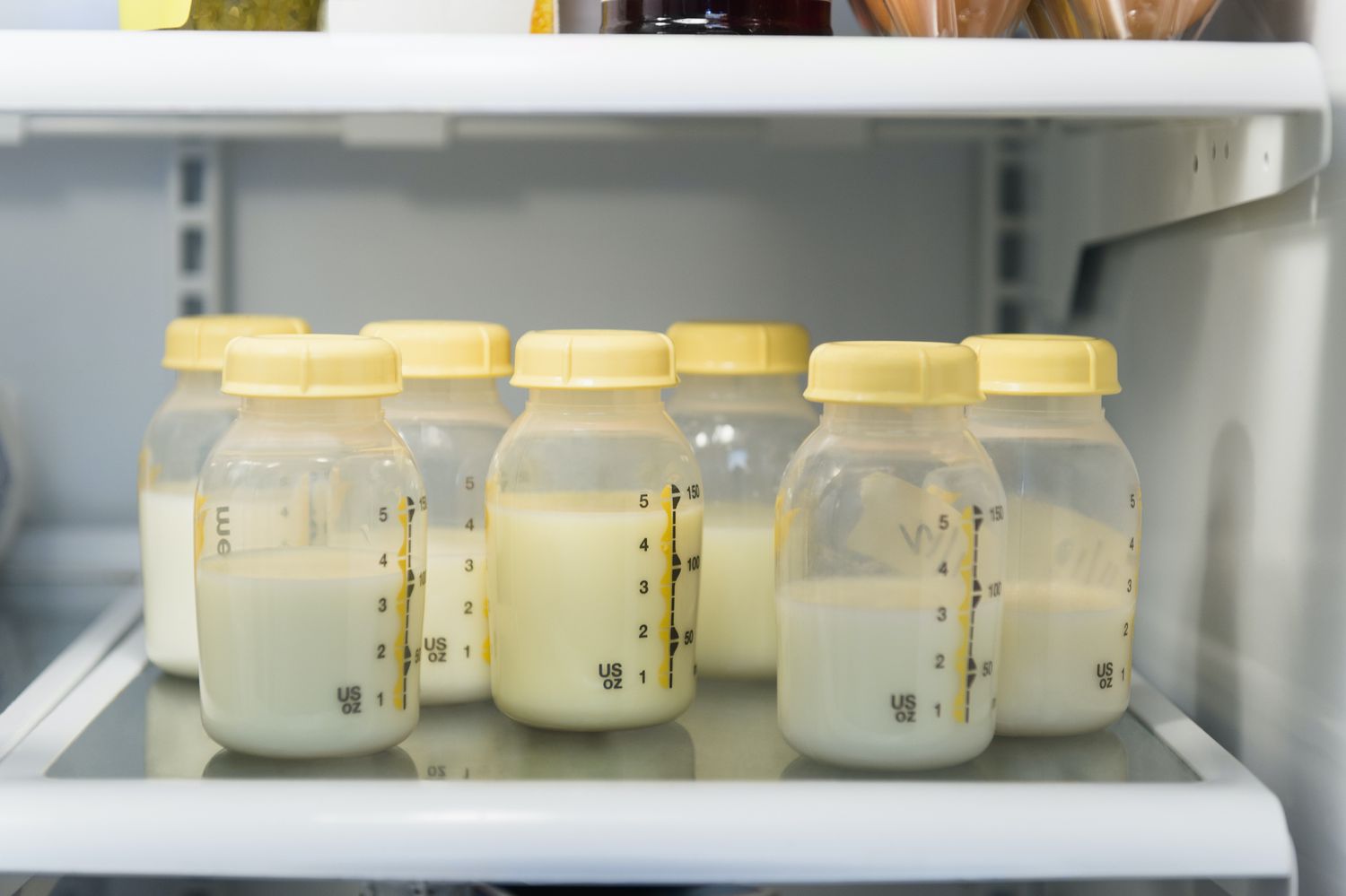
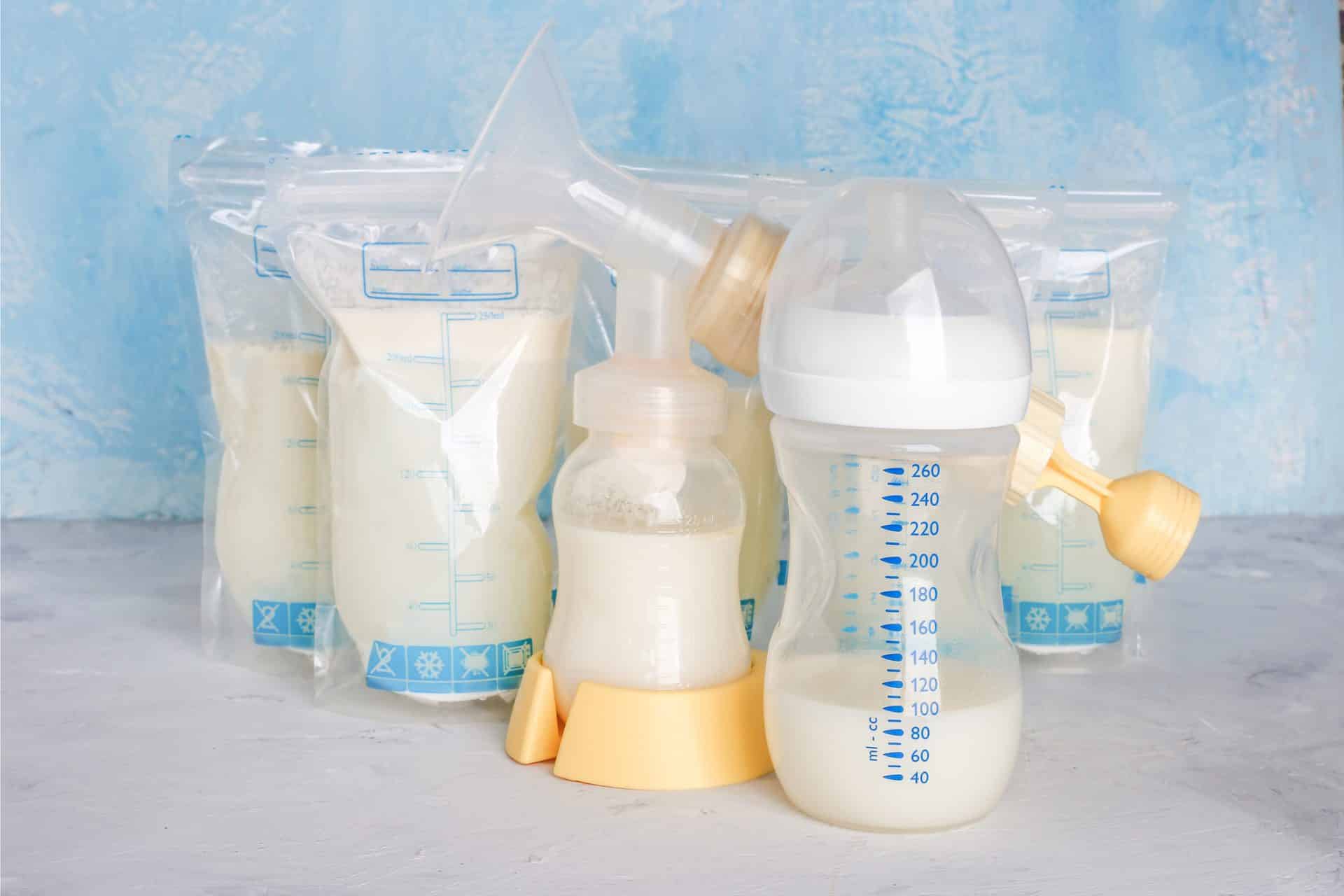
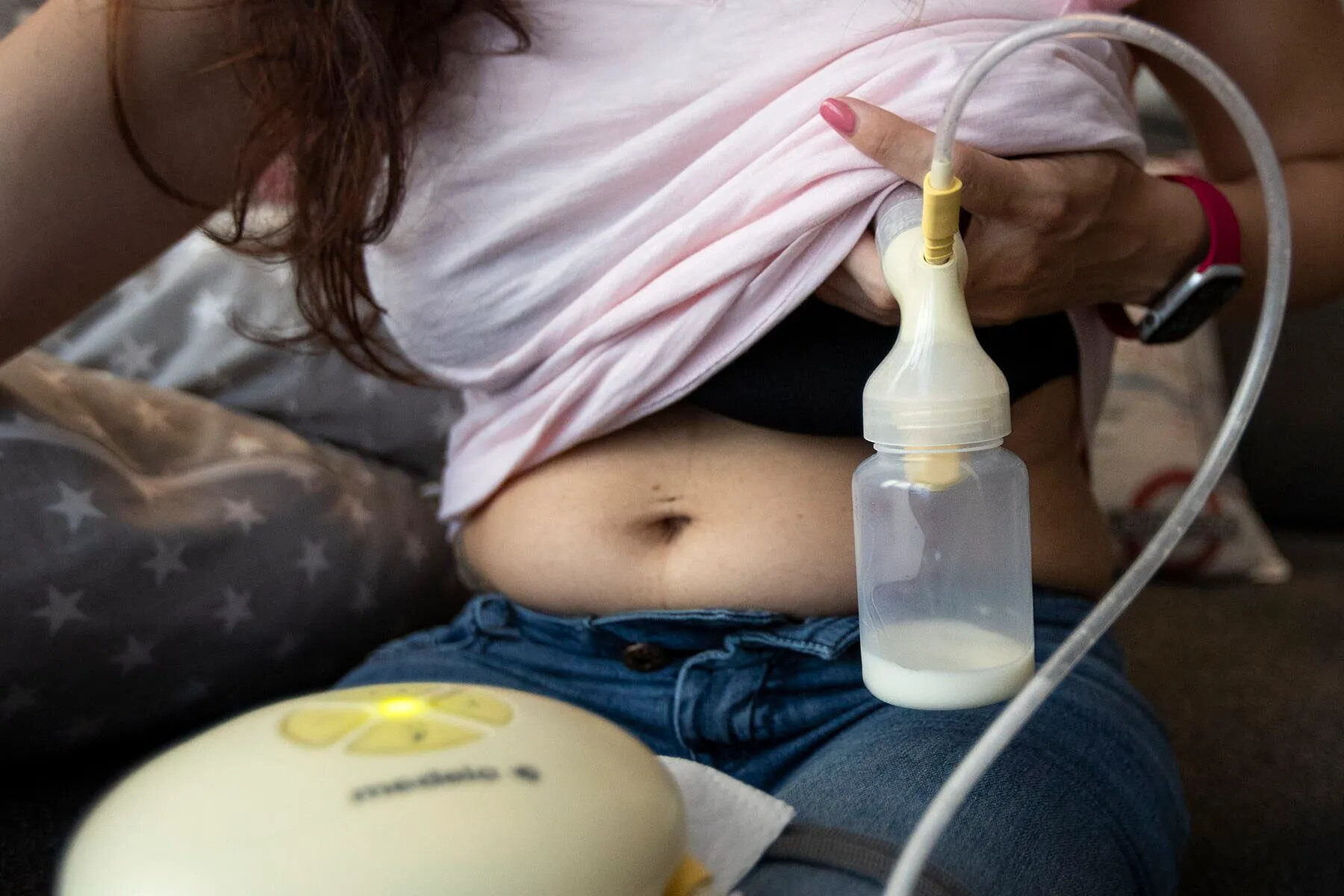
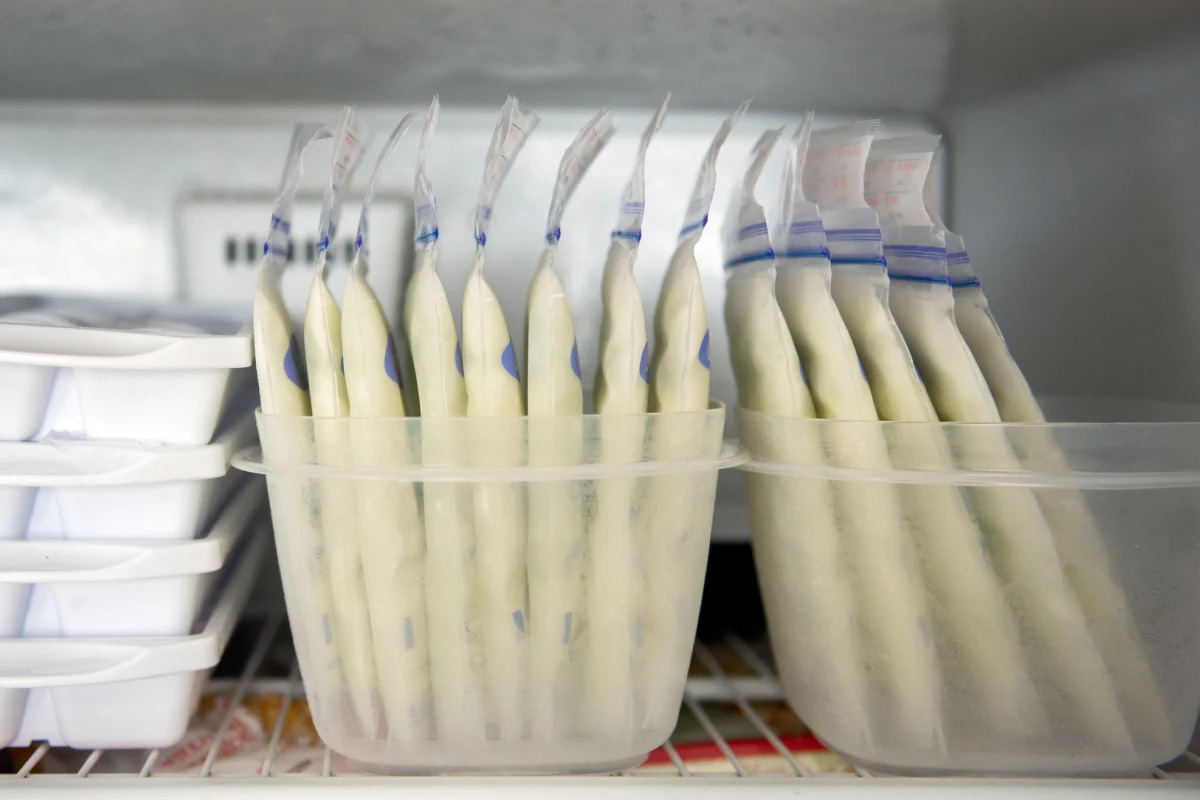
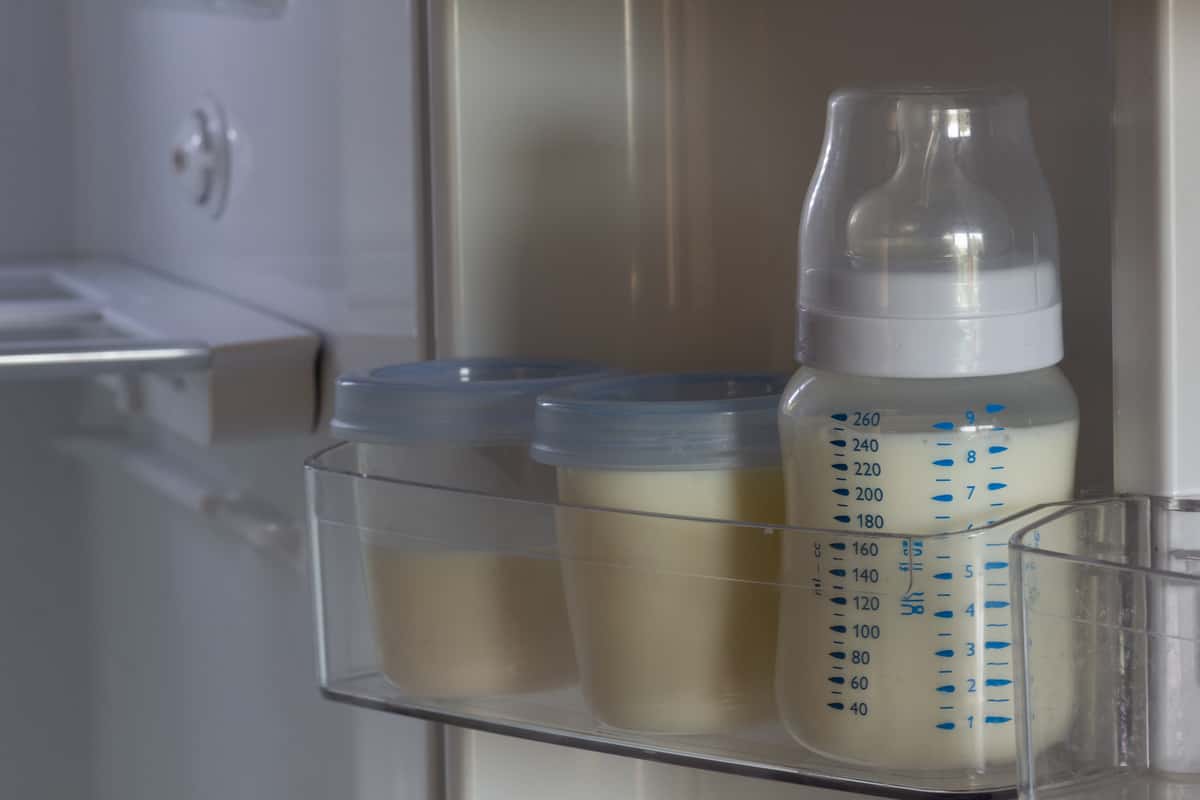
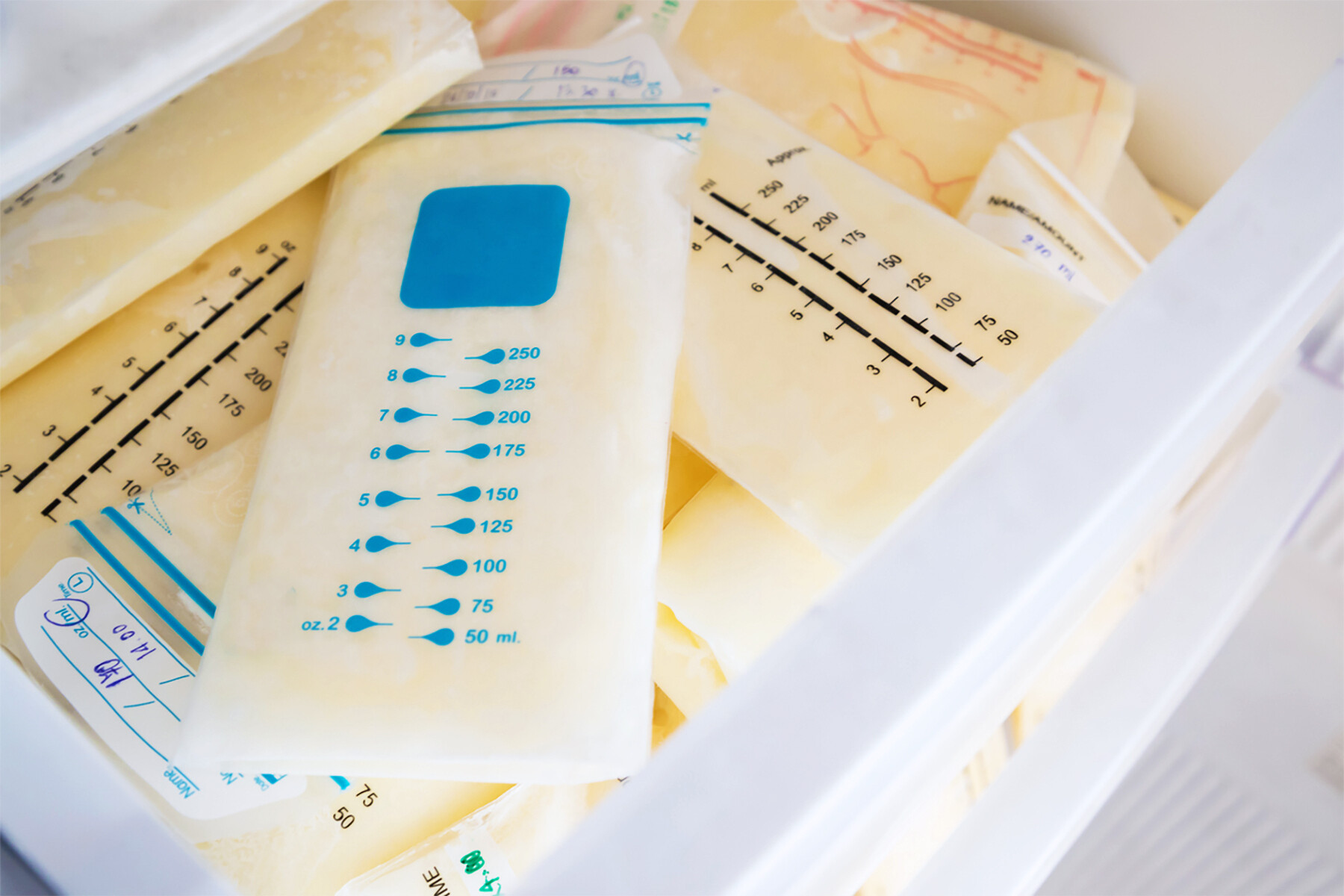
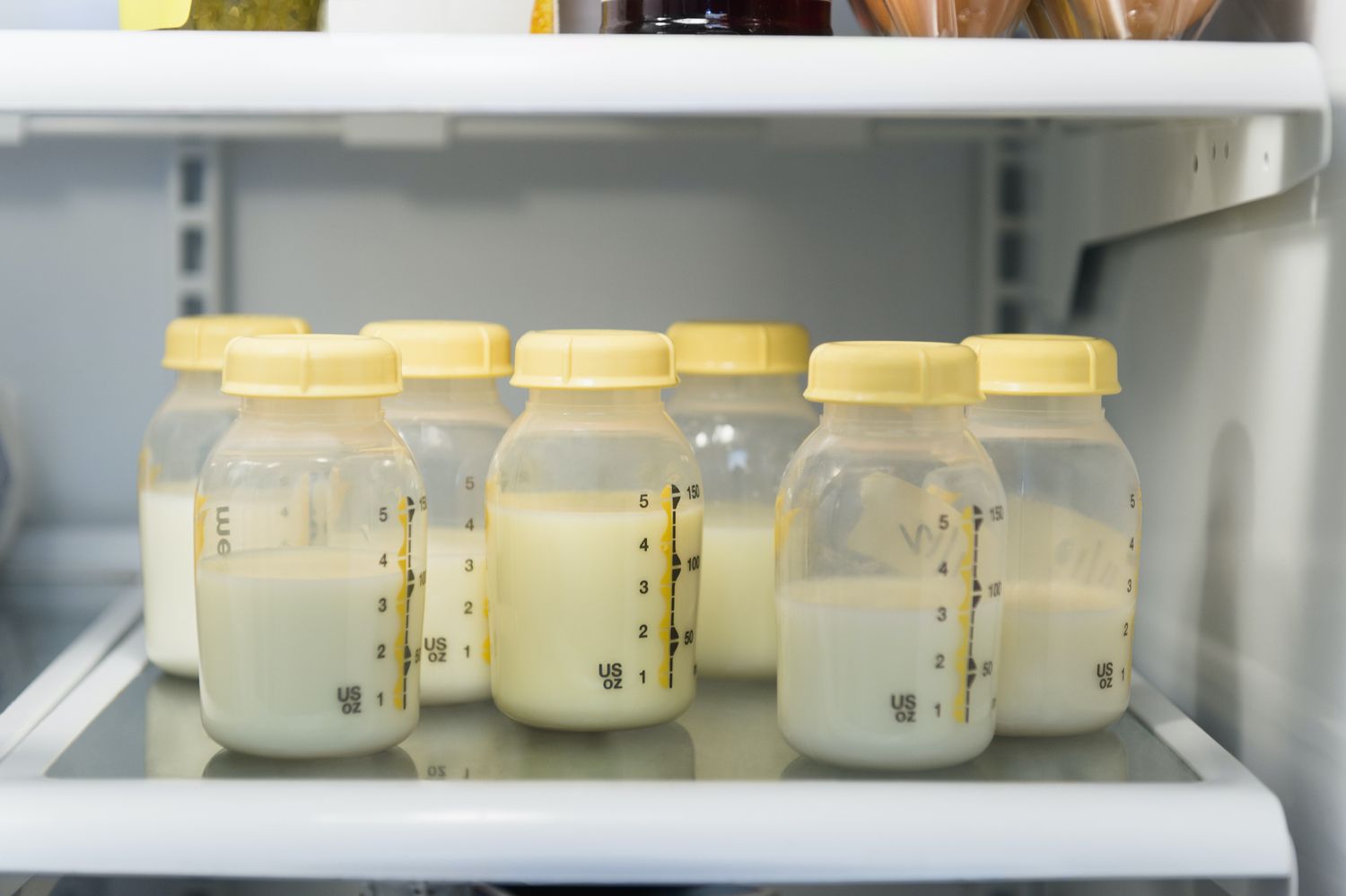
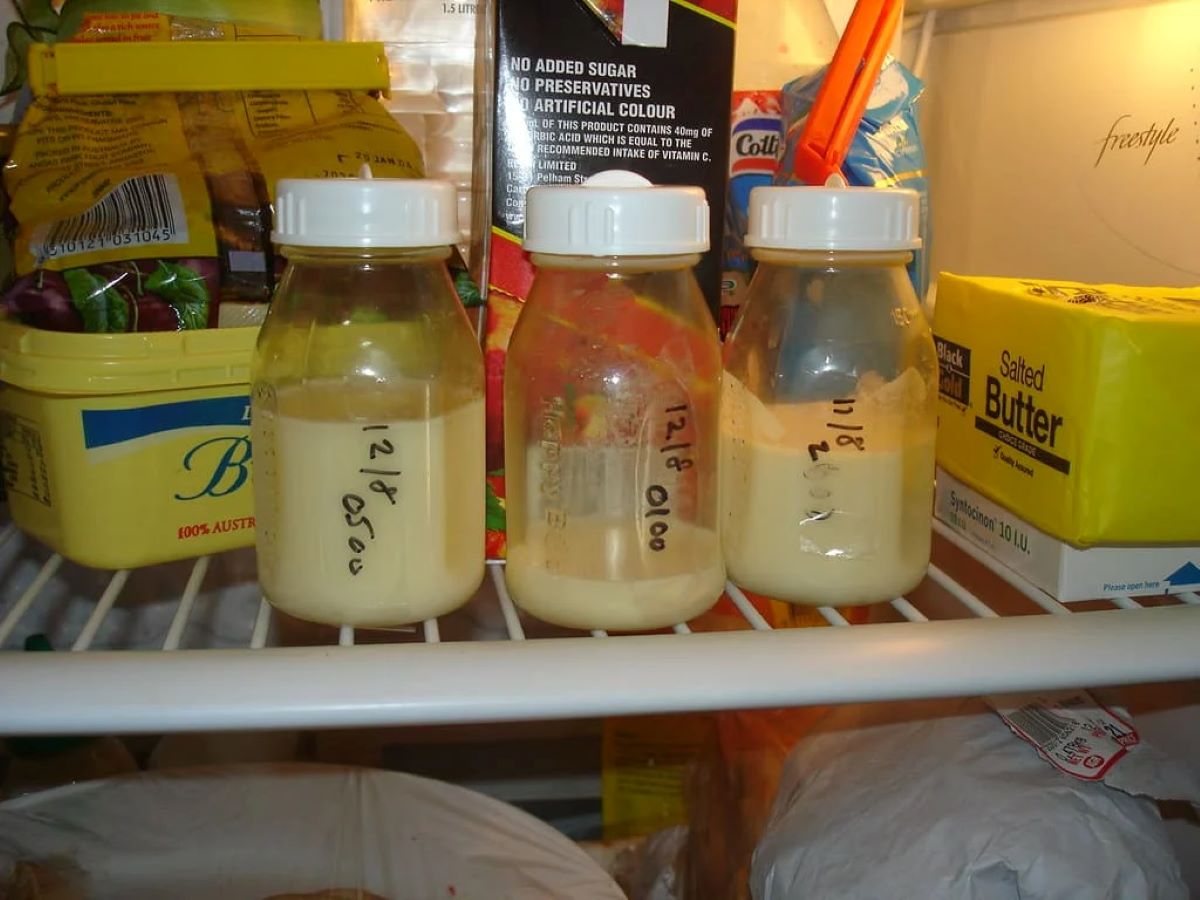
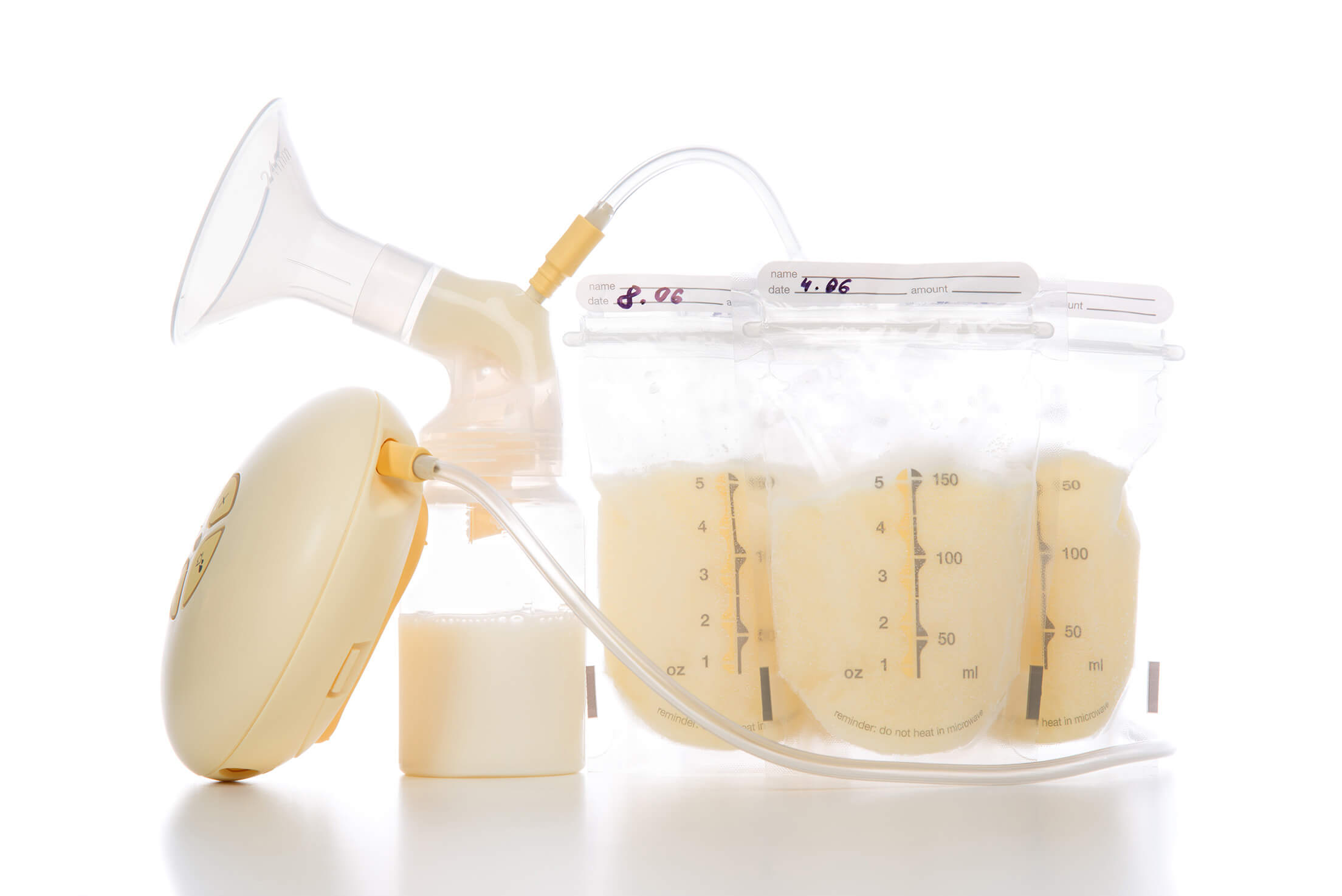
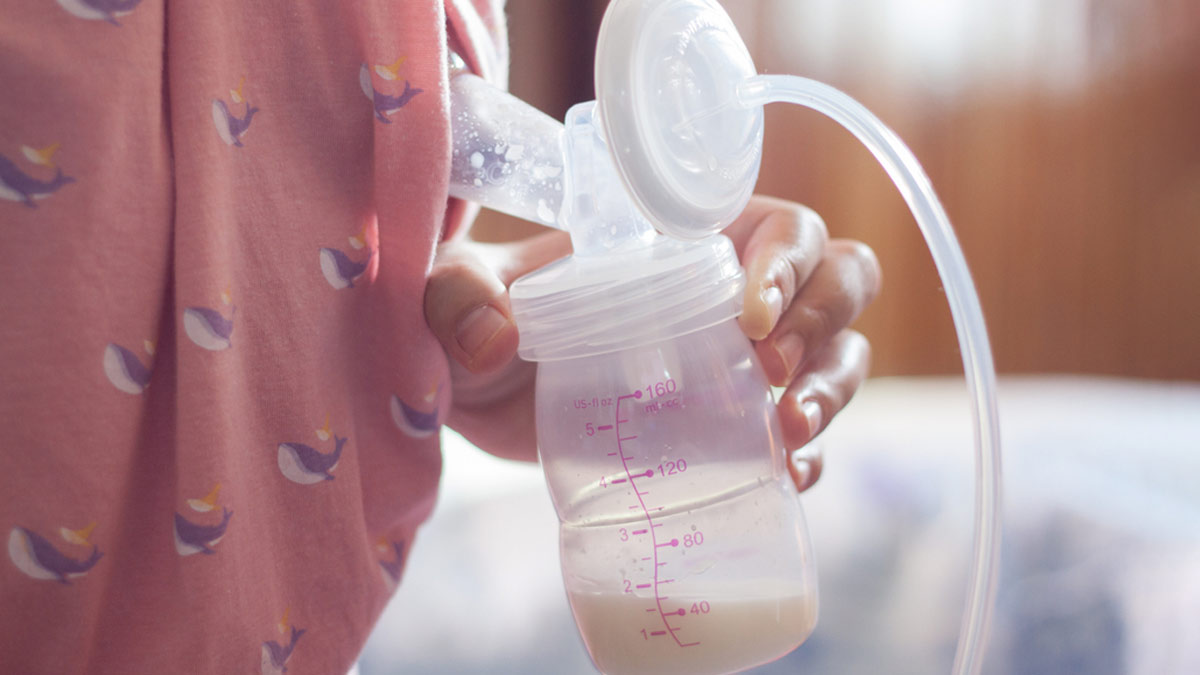
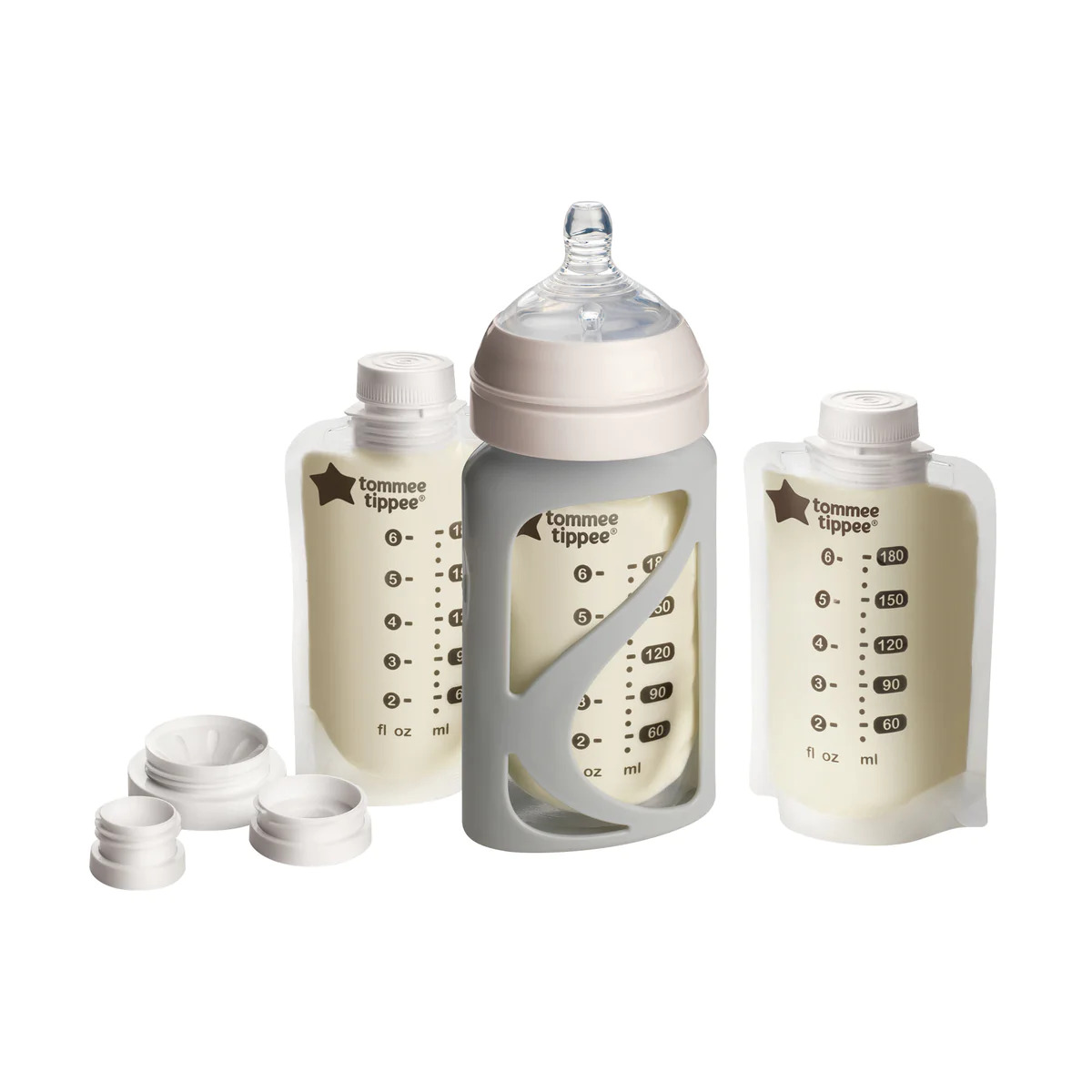

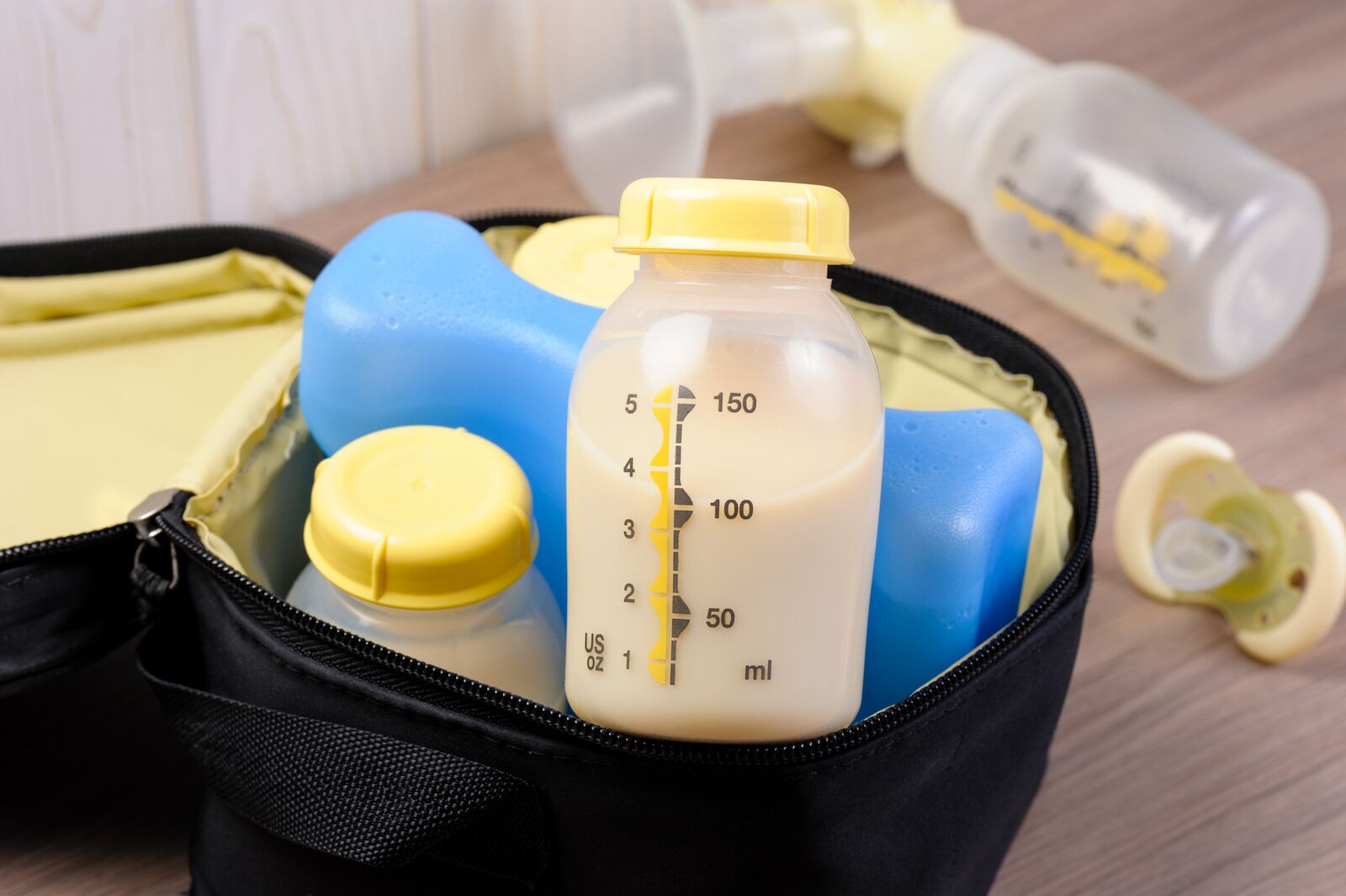

0 thoughts on “How To Store Breast Milk At Work”